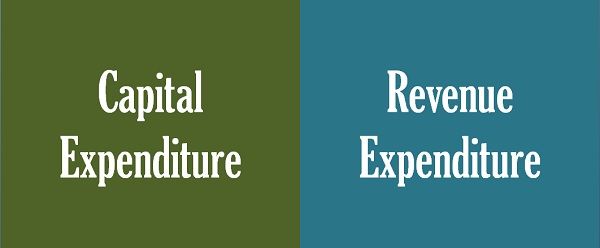What is Capital Expenditure and Revenue Expenditure?
- Posted on May 20, 2022
- Financial Terms
- By Glory

When it comes to finance and accounting, there are certain terms one must be familiar with, especially for those who are involved in various businesses. Capital expenditure and revenue expenditure are part of those terms that must be understood.
While it is known that expenditures have to do with cash outflow and spending money, a lot of people are unable to differentiate between capital expenditure and revenue expenditure.
What is a Capital Expenditure?
A company's capital expenditures are cash used to purchase, upgrade, and maintain tangible assets such as land, plants, buildings, technology, and equipment.
Capital expenditures are frequently utilized by businesses to fund new projects or investments. Repairing a roof, purchasing equipment, or establishing a new factory are all examples of capital expenditures on fixed assets.
Companies make this form of financial investment to widen the range of their activities or to add some economic boost to the activity.
Capital expenditures are major one-time acquisitions of fixed assets that will be used to generate revenue over a longer period of time. They are large capital investments made by a corporation to maintain or, more commonly, develop its business and produce new revenues.
Capital expenditures include the acquisition of long-term assets. Long-term assets are assets lasting more than a year but often have a useful life of several years.
Fixed assets, such as machinery and equipment, are frequently purchased with capital expenditures. As a result, capital expenditures are usually higher in value than revenue expenditures.
When major asset purchases are made in the near term or during the current accounting period, there are exceptions.
Capital Expenditures are also known as CapEx. Capital expenditures are frequently utilized by businesses to fund new projects or investments. CapEx is typically used to increase a company's capacity to create revenue and earnings.
Type of Capital Expenditure
Capital Expenditures include money spent on any of the following:
Land.
Equipment.
Buildings.
Furniture.
Vehicles.
Machinery.
Warehouses.
Software.
Intangible assets (patents, licenses, trademarks, etc.).
Accounting Treatment for Capital Expenditure
The investment section of the cash flow statement, also known as CFS shows the purchases or cash outflows for capital expenditures.
The CFS displays all cash inflows and outflows over a given period.
When a corporation purchases equipment, for example, the cash outflow must be shown on the cash flow statement. In addition, the equipment must be included in the balance sheet's total assets.
Companies are not allowed to deduct the whole cost of a long-term asset in the year the expense is incurred because long-term assets offer income-generating value for a firm over a number of years.
Instead, they must recoup the cost over the asset's useful life by depreciating it year by year.
Revenue Expenditures
Revenue expenditures are short-term expenses that are often utilized in the current period or within one year.
Revenue expenditures are essentially the same as operating expenses because they cover the ongoing operational costs of running a business.
Ordinary repair and maintenance costs are also included in revenue expenditures since they are required to keep an asset in good condition without significantly increasing or extending its useful life.
Repairs and routine maintenance, as well as repainting and renewal charges, are all revenue expenses tied to existing assets.
In contrast to the one-time nature of most capital expenditures, revenue expenditures might be considered recurrent expenses.
Revenue expenditure tracking enables a company to link earned revenue to business operations expenses made during the same accounting year. It must be charged to expenses as soon as they are incurred in order to be properly accounted for.
This ensures that the matching principle is applied to the expenses and earnings your company generates. This results in more precise and unambiguous income statement reporting.
Revenue Expenditures are also known as OpEx.
Types of Revenue Expenditure
Employee wages and salaries.
Development and research.
Rent and Utilities.
Shipping fees, import tariffs, and other selling expenses.
Marketing costs due to the introduction of new products.
Upgrades to software.
Traveling for business.
Taxes on property.
Any overhead item that falls under selling, general, and administrative expenses, such as salary for the corporate office.
Accounting Treatment for Revenue Expenditure
The income statement bears the recording of revenue expenditures or operating expenses.
To get at the net income or profit for the period, these expenses are removed from the revenue that a company generates from sales.
Revenue expenses are entirely deductible in the year in which they occur. In other words, expenses beat down profit from a tax standpoint, lowering taxable income for the tax period.
Differences between Capital Expenditure and Revenue Expenditure
Conclusion
Both capital expenditure and revenue expenditure are necessary for a business to make a profit in the current and future years.
It is important that both expenditures are understood and every business knows their importance and their benefits as well.
If there happens to be a mix-up, a proper guide can be given by a professional accountant, as this might help save the business owner some stress and confusion that may arise.
Beyond these terms, knowledge of how they affect businesses should also be known, their accounting treatment, tax deductions, where they ought to be posted, and every other necessary information.
When properly understood, the knowledge gained can help boost the business in a lot of ways.


Be the first to comment!
You must login to comment